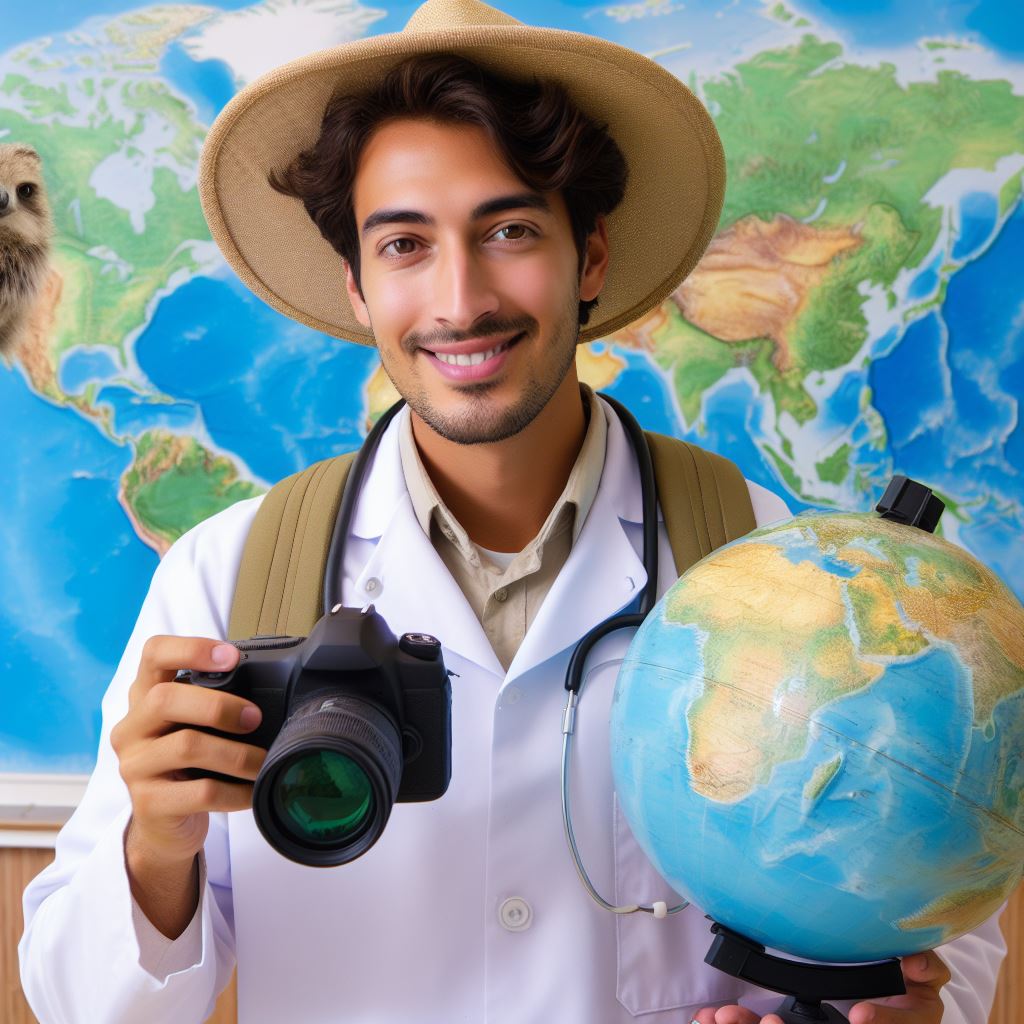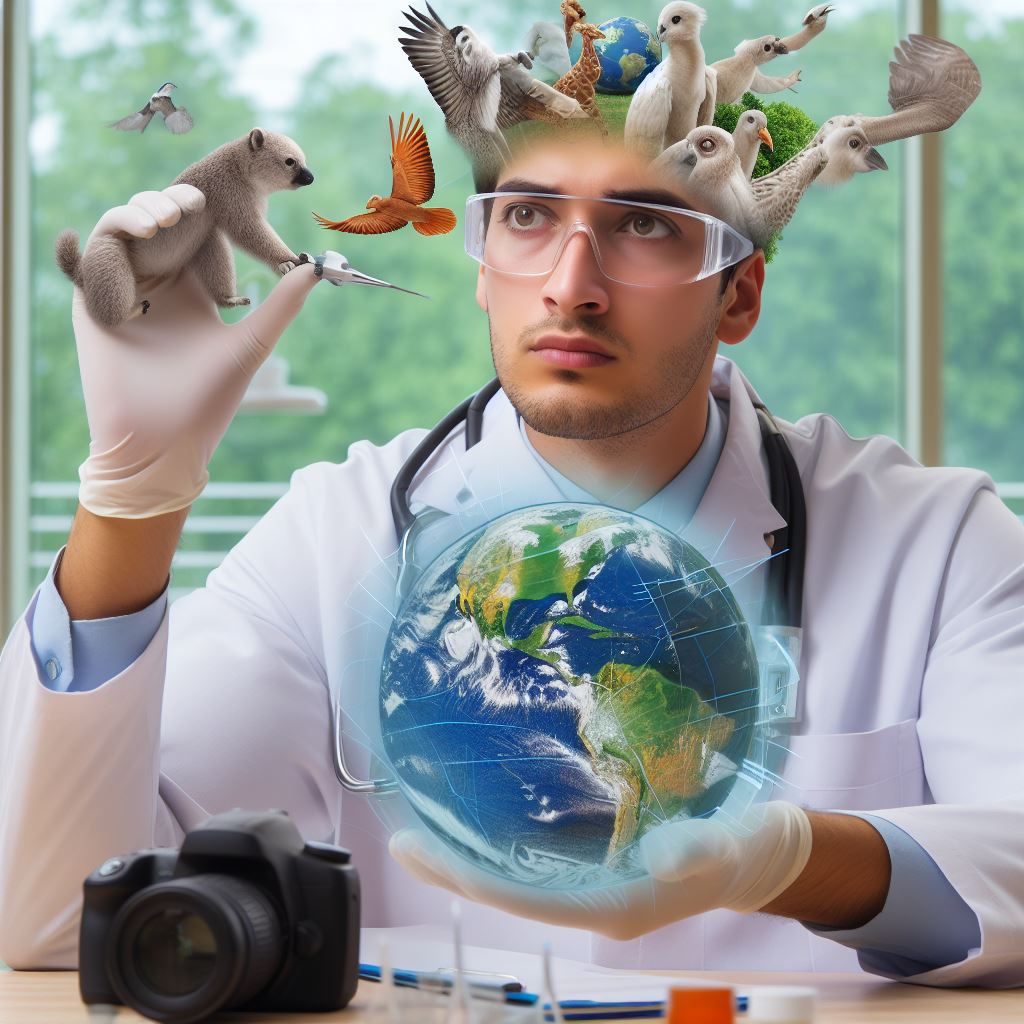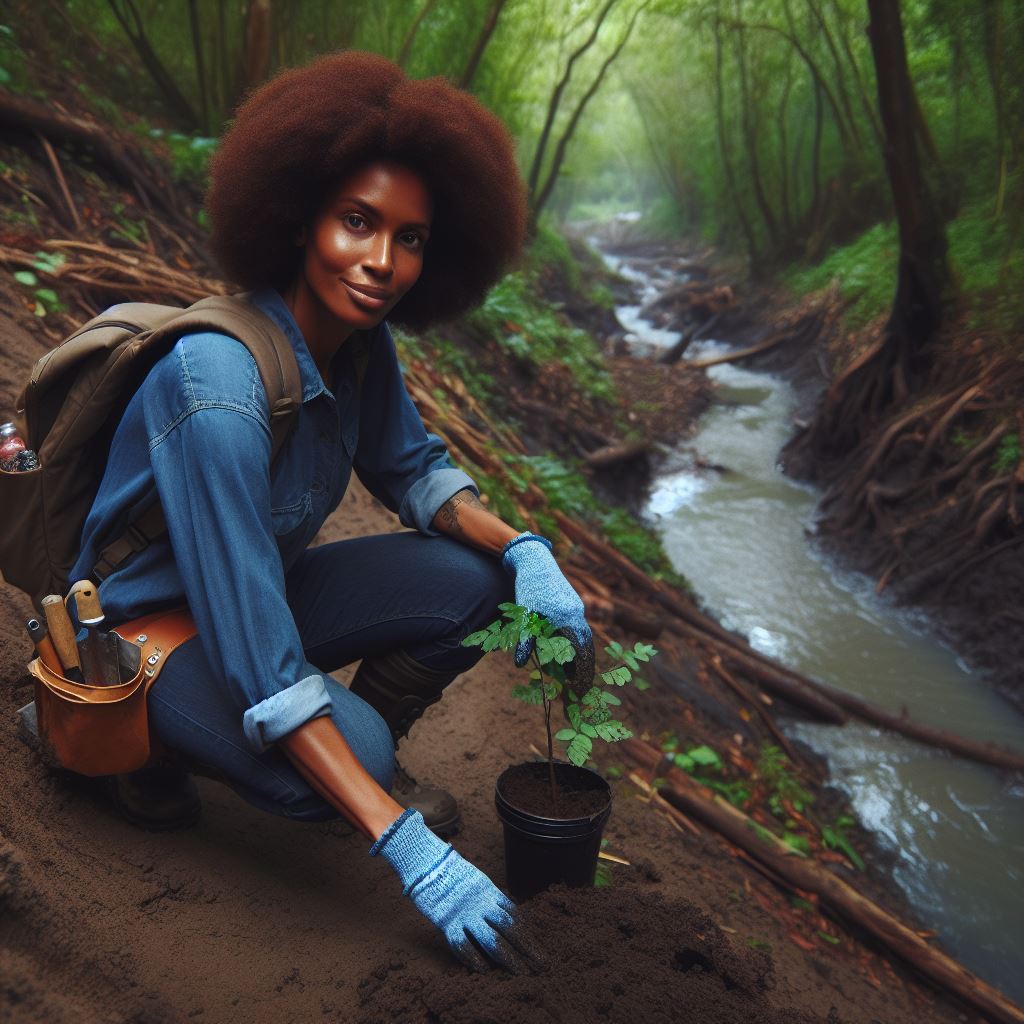Introduction
Let’s explore Day in the Life of a Conservation Scientist.
A conservation scientist plays a vital role in protecting and preserving the environment.
They study and develop strategies to maintain biodiversity and ecosystems.
This profession requires a deep understanding of the natural world and the ability to address environmental challenges.
Key Responsibilities and Tasks
- Conducting Research: Conservation scientists gather data through fieldwork, surveys, and experiments to understand the impacts of human activities on the environment.
- Analyzing Data: They use various statistical and analytical techniques to interpret their findings and identify trends or patterns in the data.
- Assessing Environmental Impact: Conservation scientists evaluate the potential consequences of development projects or policy changes on ecosystems and propose mitigation measures.
- Developing Conservation Plans: They design and implement strategies to maintain and restore biodiversity, such as habitat restoration or species protection programs.
- Collaborating with Stakeholders: Conservation scientists work closely with government agencies, NGOs, and local communities to ensure effective conservation practices and engage in public education and advocacy.
- Monitoring and Evaluation: They regularly monitor the effectiveness of conservation initiatives, collecting data to assess progress and adapt strategies accordingly.
- Providing Expert Advice: Conservation scientists provide expertise and guidance to policymakers, landowners, and other stakeholders to make informed decisions regarding environmental management.
- Publishing Research Findings: They contribute to scientific literature by publishing research papers, sharing their knowledge, and contributing to the development of conservation science.
Therefore, a day in the life of a conservation scientist involves a diverse range of responsibilities aimed at understanding, protecting, and preserving the natural world.
Their work is crucial in ensuring the sustainability and health of ecosystems for future generations.
Education and qualifications
Discussing the educational background required to become a conservation scientist
To become a conservation scientist, one must possess a solid educational background.
Here are the key requirements:
- Bachelor’s Degree: In most cases, a bachelor’s degree in environmental science, biology, or a related field is essential. These programs provide a strong foundation in scientific principles.
- Master’s Degree: While a bachelor’s degree is sufficient for entry-level positions, many conservation scientists pursue a master’s degree. This provides advanced knowledge and specialization in specific areas of conservation science.
- PhD: For those aiming for leadership roles or specialized research in the field, a Ph.D. is highly recommended. A doctorate degree demonstrates expertise and enhances career prospects.
Specific degrees or certifications often pursued in this field
Obtaining certifications can also enhance a conservation scientist’s credentials.
Some commonly pursued certifications include:
- Certified Wildlife Biologist (CWB): Demonstrates expertise in the management and conservation of wildlife populations.
- Professional Wetland Scientist (PWS): Required for conducting wetland delineations and assessments.
- Global Society for Conservation Biology (GSCB) Certification: Recognizes professionals dedicated to conserving Earth’s biodiversity.
Highlighting the importance of ongoing learning and staying updated with current research
- Ongoing Learning: Continuing education is crucial for conservation scientists to stay updated with the latest research and techniques. Attending workshops, conferences, and webinars helps them expand their knowledge and network with other professionals in the field.
- Research Publications: Publishing research findings in scientific journals and conferences significantly strengthens a conservation scientist’s profile. It demonstrates their contribution to the field and increases their credibility among peers and employers.
- Specializations: While not mandatory, specializing in a specific area of conservation science can open up additional opportunities. Some common specializations include wildlife conservation, marine ecology, forestry, and sustainable development.
- Technical Skills: Conservation scientists must develop a wide range of technical skills. These may include GIS (Geographic Information System) mapping, statistical analysis, ecological modeling, data collection and analysis, and familiarity with relevant software.
- Field Experience: Gaining hands-on experience through internships, fieldwork, or volunteer work is highly valued in the conservation science field. Practical knowledge of working in diverse ecosystems and with different species adds credibility to a scientist’s qualifications.
- Collaboration and Communication Skills: Conservation scientists often work in teams and collaborate with various stakeholders. Strong communication skills, both written and verbal, are essential for conducting research, presenting findings, and engaging with policymakers, communities, and other scientists.
In general, becoming a conservation scientist requires a solid educational foundation, ongoing learning, and staying up to date with current research.
By pursuing relevant degrees, certifications, and gaining valuable experience, individuals can successfully embark on a fulfilling career in conservation science.
Read: Canadian Crops: What Grows Where?
Work environment
As a conservation scientist, my work environment can vary greatly depending on the specific project and research I am conducting.
Typical Workplace
- In the office, I spend time analyzing data, writing reports, and reviewing scientific literature.
- My laboratory is where I conduct experiments, analyze samples, and test hypotheses.
- Fieldwork is an essential part of my job, allowing me to study ecosystems and wildlife firsthand.
Indoor and Outdoor Work
My job offers a balanced mix of indoor and outdoor work, which keeps things exciting and dynamic.
- Indoor work allows me to delve into existing research, analyze data, and develop new strategies.
- Outdoor work, on the other hand, lets me connect with nature and observe ecosystems in their natural state.
- Fieldwork provides me with crucial hands-on experience and allows me to collect data directly from the source.
- It’s exhilarating to spend time outside, whether I’m monitoring wildlife, setting up traps, or conducting surveys.
Traveling for Research
My work as a conservation scientist often requires me to travel to various locations for research purposes.
- Researching different ecosystems and species requires me to go where they are found.
- Traveling to remote locations allows me to study untouched habitats and understand their unique dynamics.
- Whether it’s studying coral reefs in the tropics or observing endangered species in the wilderness, every trip presents new challenges.
- Experiencing different environments broadens my knowledge and exposes me to diverse conservation issues.
- Traveling also means collaborating with local communities, governments, and fellow scientists on conservation efforts.
- Ultimately, our research findings aim to develop effective strategies for conservation and sustainability.
Being a conservation scientist is incredibly rewarding, but it also demands flexibility and adaptability.
My work environment can range from an office desk to a remote habitat, and I am constantly on the move, always driven by the desire to protect our planet’s biodiversity.
Read: Youth and Farming: Canada’s Future
Daily Routine
Provide a general overview of the day-to-day activities of a conservation scientist
A day in the life of a conservation scientist is filled with a variety of activities aimed at protecting and preserving our natural resources.
Discussing the variety of tasks involved, such as data collection, analysis, and report writing
Data Collection
- Early mornings often involve heading out to field sites to collect data.
- Scientists may conduct surveys to monitor populations of endangered species.
- They use various techniques such as camera traps and GPS to gather information.
- Collecting samples of plants, animals, and soil is also part of their routine.
Data Analysis
- Back in the lab, conservation scientists spend hours analyzing the data they collected.
- They use statistical software to identify patterns and trends in the collected information.
- Through careful analysis, they gain insights into the health of ecosystems and the impact of human activities.
Report Writing
- Once the data has been analyzed, conservation scientists compile reports summarizing their findings.
- These reports are crucial for informing policymakers and stakeholders about environmental issues.
- The scientists must present their data and conclusions in a clear and concise manner.
- They use charts, graphs, and tables to present their findings visually.
Highlighting the importance of collaboration and communication with other professionals in the field
Collaboration and Communication
- Collaboration with other professionals is essential for conservation scientists.
- They often work in teams, sharing their expertise and knowledge with colleagues.
- Collaboration allows for a comprehensive approach to conservation efforts.
- Communication with other professionals, such as government officials and NGO representatives, is vital.
- Conservation scientists need to advocate for their findings and raise awareness about environmental issues.
Continuing Education
- Conservation scientists are committed to staying up to date with the latest research and techniques.
- They attend conferences and workshops to learn from other experts in the field.
- Continuous learning helps them improve their methods and contribute to scientific advancements.
Fieldwork Adventures
- Fieldwork can be physically demanding and challenging but also rewarding.
- Conservation scientists have the opportunity to explore breathtaking landscapes and observe wildlife up close.
- They endure long hikes, extreme weather conditions, and remote locations in their pursuit of knowledge.
A Lasting Impact
Despite the demanding nature of their work, conservation scientists find fulfillment in making a lasting impact on the environment.
Their research and efforts help to develop effective conservation strategies and protect Earth’s biodiversity.
By understanding ecosystems, they can promote sustainable practices that balance human needs with environmental concerns.
A day in the life of a conservation scientist is far from routine; it is an ongoing adventure in protecting our planet.
Read: Farm to Table: Canadian Farming’s Role
Unlock Your Career Potential
Visualize a clear path to success with our tailored Career Consulting service. Personalized insights in just 1-3 days.
Get Started
Fieldwork
Detail the various types of fieldwork conservation scientists may engage in
Conservation scientists engage in various types of fieldwork to study and protect our natural environment.
Here are some examples:
- Wildlife surveys: Scientists conduct surveys to assess the population size and distribution of different species.
- Habitat assessments: They evaluate the quality and health of habitats to identify conservation needs.
- Monitoring programs: Scientists set up long-term monitoring programs to track changes in ecosystems over time.
- Remote sensing: They use satellite imagery and aerial surveys to study large-scale patterns and changes in landscapes.
- Experimental research: Scientists design and implement field experiments to understand ecological processes and test conservation interventions.
Examples of data collection methods used, such as surveys, sample collection, and habitat assessments
During fieldwork, conservation scientists employ various data collection methods to gather essential information.
These methods include:
- Surveys: Scientists use questionnaires, interviews, and direct observations to collect data on species presence, behavior, and abundance.
- Sample collection: They collect soil, water, and vegetation samples to analyze the composition, structure, and quality of habitats.
- Camera trapping: Scientists set up camera traps to remotely capture images or videos of wildlife for population estimates and behavior studies.
- Acoustic monitoring: They use specialized audio recording equipment to capture sounds made by animals for species identification and activity patterns.
- GPS tracking: Scientists attach GPS devices to animals to track their movements and understand their habitat preferences.
Discussing potential challenges faced during fieldwork
Despite the excitement and fulfillment that fieldwork brings, conservation scientists face certain challenges along the way.
Some of these challenges include:
- Harsh environmental conditions: Fieldwork often takes place in remote, extreme, and uncomfortable environments.
- Physical demands: Scientists may have to navigate challenging terrain, endure long hours outdoors, and carry heavy equipment.
- Data limitations: Limited time and resources can make it difficult to collect comprehensive data for accurate analyses.
- Logistical obstacles: Organizing field expeditions, coordinating with research teams, and securing permits can be complex and time-consuming.
- Interactions with locals: Communication and cultural differences between scientists and local communities can create challenges.
How they are overcome
To overcome these challenges, conservation scientists employ various strategies:
- Training and preparation: Proper training in outdoor skills, field techniques, and safety protocols helps scientists navigate challenging environments.
- Collaboration: Working in teams allows scientists to share knowledge, divide tasks, and address logistical challenges effectively.
- Adapting research methods: Scientists adapt their research techniques to suit the specific circumstances and limitations of the fieldwork location.
- Effective communication: Engaging and building relationships with local communities fosters understanding and cooperation.
- Flexibility and resilience: Fieldwork rarely goes exactly as planned, so scientists need to adapt and problem-solve on the spot.
Fieldwork plays a crucial role in conservation science, providing valuable data and insights into the natural world.
Despite the challenges, it remains an exciting and rewarding aspect of a conservation scientist’s job.
Read: Canadian Logger: Certification and Training
Laboratory work
In the field of conservation science, laboratories play a crucial role in conducting research and analysis.
They serve as the hub for scientific investigations and provide valuable insights into various aspects of conservation.
Role of laboratories in conservation science
- Laboratories allow conservation scientists to investigate the composition and characteristics of samples collected from the natural environment.
- They help scientists determine the environmental impact of human activities on different ecosystems.
- By analyzing samples, laboratories aid in the identification and preservation of endangered species.
- These facilities contribute to the development of conservation strategies and policies based on scientific evidence.
Specific tasks conducted in a laboratory setting
- Analyzing samples: Laboratories enable conservation scientists to analyze soil, water, air, and other samples to assess their quality and understand environmental changes.
- Studying specimens: Scientists examine specimens, such as plants, animals, and fossils, to gain insights into their biology, behavior, and evolutionary history.
- Microscopic analysis: Laboratories utilize high-powered microscopes to study the microscopic organisms and structures that are essential for conservation research.
- Chemical analysis: Through chemical analysis, laboratories can determine the presence of pollutants and toxins in samples, identifying potential threats to ecosystems.
- Genetic research: Conservation scientists conduct genetic analysis in laboratories to study the genetic diversity and population dynamics of species.
Use of specialized equipment and technology
- Mass spectrometry: Laboratories employ mass spectrometers to identify and analyze the composition of complex mixtures found in environmental samples.
- High-performance liquid chromatography (HPLC): HPLC aids in separating and analyzing different components in a sample, assisting in pollution assessment.
- PCR (polymerase chain reaction): This technique allows conservation scientists to amplify and study specific DNA sequences in organisms for genetic research.
- Satellite imagery: Laboratories use satellite data to monitor changes in land cover, detect deforestation, and assess the health of ecosystems from a remote perspective.
- Data analysis software: Specialized software helps scientists process and analyze large datasets, enabling them to draw meaningful conclusions from their research.
Laboratories in conservation science provide vital support to scientists by offering controlled environments for conducting experiments and analyses.
They facilitate the understanding of ecological processes and aid in the protection and restoration of endangered habitats and species.
Conservation scientists rely on the collaboration between fieldwork and laboratory work to formulate comprehensive strategies for preserving the natural world.
Through the use of advanced technology and specialized equipment, these scientists are equipped to make informed decisions, contribute to policy-making, and ensure the sustainable management of our planet’s resources.
Data analysis and interpretation
As a conservation scientist, one of the most crucial aspects of my work is data analysis and interpretation.
The significance of this process cannot be underestimated, as it helps us make informed decisions and take effective conservation measures.
In this section, I will highlight the importance of data analysis in conservation science, discuss the methods and tools we use to analyze collected data, and explain how we interpret the results and their implications for conservation efforts.
Significance of data analysis
Data analysis forms the backbone of conservation science.
It allows us to quantify and understand the patterns, trends, and relationships within the data we collect from various sources.
By analyzing large datasets, we can uncover important information that would otherwise remain hidden.
Firstly, data analysis helps us identify and assess the current status of endangered species and their habitats.
By analyzing population data, distribution patterns, and habitat quality, we can determine which species are at high risk and need immediate conservation actions.
Secondly, data analysis enables us to evaluate the effectiveness of conservation strategies and interventions.
By comparing pre and post-intervention data, we can measure the impact of our efforts and make necessary adjustments to ensure successful outcomes.
Methods and tools for data analysis
Conservation scientists utilize a variety of methods and tools to analyze collected data.
One common approach is statistical analysis, which involves applying mathematical models and tests to quantify relationships and patterns within the data.
We often use software programs like R, Python, and statistical packages such as SPSS or SAS to perform complex statistical analyses.
These tools provide us with a wide range of techniques, including regression analysis, multivariate analysis, and spatial analysis, to name a few.
In addition to statistical analysis, we also use Geographic Information System (GIS) software to analyze and visualize spatial data.
GIS allows us to overlay different layers of data, such as habitat maps, climate data, and species distribution maps, to gain a comprehensive understanding of ecological processes and interactions.
Interpretation of results and implications for conservation efforts
Once the data has been analyzed, the interpretation of results becomes crucial.
We look for meaningful patterns, trends, and correlations that can guide our conservation efforts.
It is important to remember that data analysis does not provide definitive answers but helps us make informed decisions.
Interpreting the results involves understanding the context and limitations of the data.
We consider factors such as sampling bias, data quality, and uncertainties associated with the analysis.
These considerations allow us to avoid drawing false conclusions or making uninformed decisions that could negatively impact conservation efforts.
Furthermore, the implications of data analysis and interpretation are far-reaching.
The results can influence policy decisions, conservation planning, and resource allocation.
For example, if the analysis reveals a decline in a species’ population due to habitat loss, conservation efforts can focus on creating protected areas or implementing habitat restoration projects.
Essentially, data analysis and interpretation are vital components of conservation science.
They allow us to derive meaningful insights, evaluate the effectiveness of conservation strategies, and guide our efforts towards protecting and preserving our natural environment.
By harnessing the power of data, we can make a significant difference in safeguarding the biodiversity of our planet.
Report Writing and Communication
Clear and effective communication skills are crucial in the profession of a conservation scientist.
Not only do these skills facilitate the transmission of scientific knowledge to the relevant stakeholders, but they also aid in building strong professional relationships.
The Importance of Clear and Effective Communication
In the field of conservation science, it is essential for scientists to be able to clearly articulate their research findings and recommendations.
This enables decision-makers, such as government officials and environmental organizations, to understand and act upon the information provided.
Moreover, effective communication skills help conservation scientists engage with local communities, conveying the significance of conservation efforts and gaining their support and cooperation.
Writing Reports and Scientific Papers
One of the primary forms of communication for conservation scientists is through report writing.
Reports serve as a comprehensive documentation of research methodologies, results, and recommendations.
Conservation scientists must possess strong writing skills to convey complex scientific information in a clear, concise, and accessible manner.
This ensures that the reports are understandable to a diverse audience, including policymakers, stakeholders, and the general public.
Scientific papers, on the other hand, are published in peer-reviewed journals and contribute to the body of knowledge in the field.
These papers require meticulous attention to detail, precise language, and adherence to established scientific writing conventions.
Presentations and Collaborations
Besides report writing, conservation scientists also rely on presentations to effectively communicate their research findings.
Presentations allow scientists to showcase their work and engage with fellow researchers, stakeholders, and the wider scientific community.
These presentations should be prepared in a way that captures the audience’s attention and conveys the significance of the research.
Visual aids, such as graphs, images, and videos, can be used to enhance the understanding and impact of the presentation.
Collaboration with other researchers is another crucial aspect of communication in the field of conservation science.
By working together, scientists can pool their expertise, resources, and knowledge to address complex conservation challenges.
Collaborations facilitate the sharing of ideas, data, and methodologies, leading to more robust and impactful research outcomes.
Effective communication skills are essential in fostering successful collaborations and ensuring that all team members are aligned towards a common goal.
Basically, clear and effective communication skills play a vital role in the profession of a conservation scientist.
Whether through report writing, scientific papers, presentations, or collaborations, these skills are the key to transmitting knowledge, engaging stakeholders, and driving positive change in the field of conservation science.
Conservation scientists should continuously work on honing their communication skills to effectively convey the importance of their research and mobilize support for conservation efforts.
Challenges and Rewards in the Life of a Conservation Scientist
Being a conservation scientist is a dynamic and fulfilling professional choice that comes with its own set of challenges and rewards.
Let’s delve into the world of these dedicated individuals and explore the various aspects that make their work truly special.
Challenges Faced by Conservation Scientists
- Financial Constraints: Conservation scientists often struggle with limited funding, hindering their ability to conduct research and implement conservation projects effectively.
- Political Sensitivities: The field of conservation science is often entangled with political agendas, making it challenging to navigate and find support for conservation efforts.
- Logistical Issues: Working in remote and diverse ecological settings can present logistical challenges, requiring scientists to adapt and overcome various obstacles.
- Public Awareness: Creating awareness about the importance of conservation and the need for sustainable practices remains an ongoing challenge.
- Community Engagement: Encouraging local communities to actively participate in conservation efforts can be difficult due to cultural, economic, and social barriers.
Despite these challenges, conservation scientists continue to strive for the betterment of our environment, driven by their passion and dedication.
The Emotional Aspect of Working in Conservation Science
Working in conservation science can evoke a wide range of emotions, both positive and negative.
It is a field that requires scientists to confront environmental degradation firsthand, which can be emotionally challenging.
Witnessing the destruction of natural habitats, the extinction of species, or the devastating impacts of pollution can elicit feelings of sadness, frustration, and helplessness.
Conservation scientists often carry the weight of these experiences, not only for themselves but for the sake of future generations.
However, amidst the emotional challenges, there is hope.
Conservation scientists witness remarkable stories of resilience and recovery, where previously endangered species thrive.
These moments of success fuel their determination to combat environmental degradation and create lasting change.
The Fulfilling Nature of Conservation Science
Despite the challenges and emotional rollercoaster that comes with the territory, being a conservation scientist is incredibly fulfilling.
Conservation scientists have a profound positive impact on the environment.
Through their research and conservation efforts, they contribute to the preservation of biodiversity, the restoration of ecosystems, and the overall health of our planet.
They play a crucial role in seeking sustainable solutions that balance human needs with the well-being of nature.
The fulfillment experienced by conservation scientists is not limited to their impact on the environment alone.
They also explore and discover new scientific insights, contribute to global knowledge, and collaborate with like-minded individuals from diverse backgrounds.
Moreover, being a conservation scientist means working in stunning natural landscapes, observing rare and fascinating species, and enjoying a deep connection with the natural world.
Overall, the life of a conservation scientist is certainly not without its challenges.
However, the rewards and fulfillment obtained from actively contributing to the preservation of our environment and witnessing positive changes make it a truly remarkable profession.
So, if you feel the call to protect our planet’s biodiversity and be a part of something greater, a career in conservation science may be the path for you.
Conclusion
The blog post highlighted a day in the life of a conservation scientist.
We discussed the various tasks they undertake, such as collecting data, conducting research, and developing conservation strategies.
It is evident that the work done by conservation scientists is of utmost importance and significance.
They play a crucial role in protecting and preserving our natural environment and biodiversity.
By studying and understanding ecosystems, conservation scientists contribute to the development of effective policies and practices that promote sustainability.
If you are someone who is passionate about nature and interested in making a positive impact on the environment, pursuing a career in conservation science is highly encouraged.
It offers an opportunity to contribute to the protection of our planet and the well-being of future generations.
Lastly, the role of conservation scientists cannot be understated.
Their dedication and hard work are essential for the continued existence of our precious natural resources.
So, if you have a passion for conservation and science, consider joining the field of conservation science and be part of the solution.




